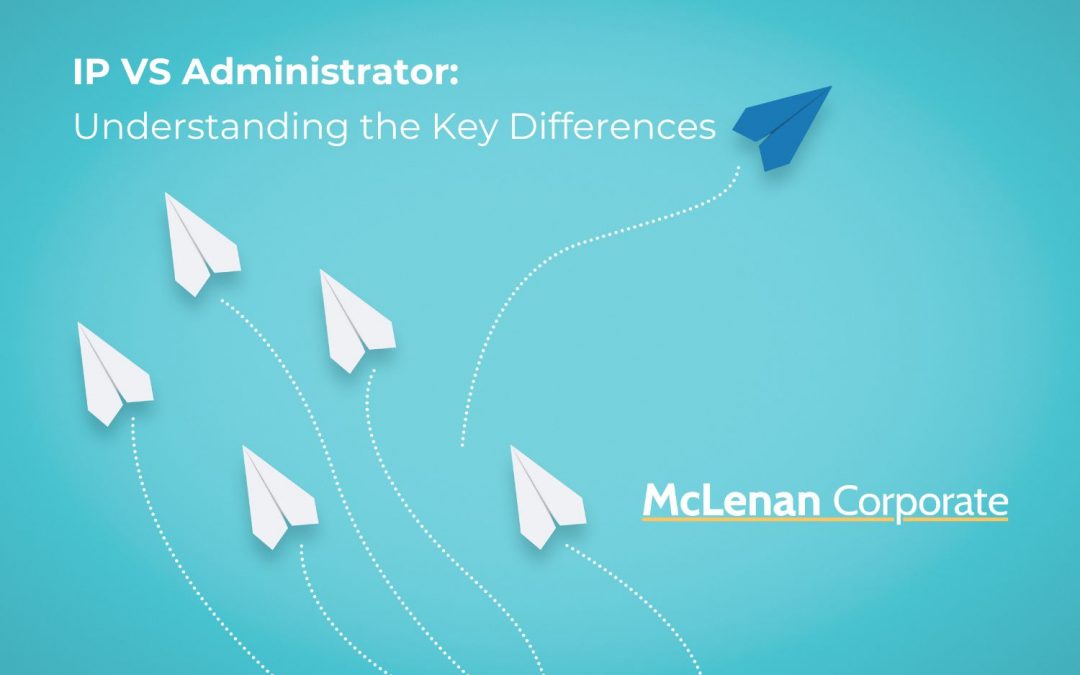In the intricate world of business recovery and insolvency, terms like “Insolvency Practitioner” (IP) and “Administrator” are often mentioned, sometimes interchangeably, leading to confusion about their roles and responsibilities. This educational piece aims to dispel the ambiguities, outlining the key differences between an IP and an Administrator, especially within the context of Scottish law, providing clarity for businesses navigating financial distress.
The Insolvency Practitioner: A Broad Overview
An Insolvency Practitioner (IP) is a professional qualified and licensed to act in relation to an insolvent individual, partnership, or company. In Scotland, IPs are authorised by recognised bodies such as the Insolvency Practitioners Association (IPA) or the Institute of Chartered Accountants of Scotland (ICAS), among others. They play various roles across the spectrum of insolvency procedures, including acting as Administrators, Liquidators, or Trustees in Bankruptcy.
Key Responsibilities:
- Advising companies or individuals facing financial difficulties.
- Acting as Liquidators in the winding up of insolvent companies.
- Serving as Trustees in the bankruptcy of individuals.
- Operating as Administrators to rescue a company as a going concern.
- Implementing Company Voluntary Arrangements (CVAs) or Protected Trust Deeds in Scotland.
IPs must navigate a complex landscape of financial analysis, stakeholder negotiation, and legal obligations to maximise returns to creditors while considering the interests of all parties involved.
The Administrator: A Specific Role Within Insolvency
An Administrator, in the context of corporate insolvency, is an IP appointed to manage the affairs of a company during administration. This is a procedure aimed at rescuing the company as a going concern, achieving a better result for creditors than would be possible through immediate liquidation, or realising property to make distributions to one or more secured or preferential creditors.
Key Responsibilities:
- Taking control of the company and its assets.
- Assessing the company’s financial situation.
- Formulating a plan of action that could involve restructuring, seeking new investment, or preparing the business for sale.
- Making proposals to creditors.
- Controls the company during the administration period.
The role of the Administrator is defined within the framework of the Insolvency Act 1986 and the Enterprise Act 2002, with specific modifications applicable in Scotland under Scottish corporate insolvency rules.
Distinguishing Between IPs and Administrators
While all Administrators must be licensed Insolvency Practitioners, not all IP appointments are to serve as Administrators. The distinction lies in the specific circumstances of the insolvency case and the objectives sought through the intervention. Here are a few key differences:
- Scope of Work: An IP can undertake various roles, including advisory positions before formal insolvency procedures commence. In contrast, an Administrator is appointed specifically to manage the affairs, business, and property of a company in administration.
- Objective: The IP’s role can vary based on the insolvency procedure they are undertaking (for example; liquidation, bankruptcy, CVA). An Administrator’s primary goal is to rescue the company as a going concern, or failing that, to achieve a better result for the company’s creditors than would likely be the case if the company were liquidated without first being in administration.
- Appointment: The process of appointing an IP can vary depending on the insolvency procedure. An Administrator is appointed either by the court, the company or its directors, or a qualifying floating charge holder.
The Role of Scottish Law
Scottish insolvency law shares many similarities with the rest of the UK but also has unique elements that affect the role and appointment of IPs and Administrators. For instance, Scotland has its own legal instruments and courts that deal with insolvency, and procedures like Protected Trust Deeds are specific to Scotland.
Conclusion
Understanding the distinction between an IP and an Administrator is crucial for any stakeholder navigating the complexities of financial distress and insolvency. While IPs offer a broad range of services across the financial distress spectrum, an Administrator is a specialist role with a focused objective of rescuing the company or maximising creditor returns under specific circumstances.
Businesses and individuals facing financial challenges should seek early advice from a qualified IP to explore all available options. Early intervention can provide a wider range of potential solutions, potentially avoiding the more severe consequences of insolvency.
By demystifying these roles, stakeholders can better navigate the insolvency process, armed with the knowledge to make informed decisions during challenging times.

